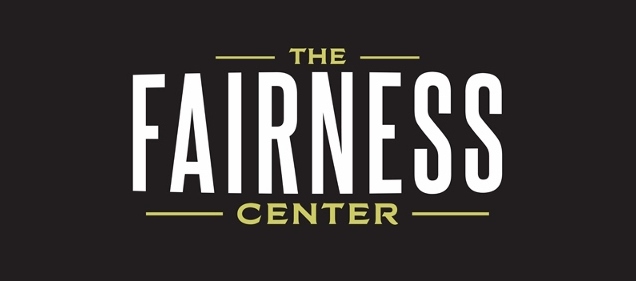Commentary
Janus and Pennsylvania: A Legal Analysis

When Mark Janus asked the United States Supreme Court to hear his case last year, he reignited an old legal dispute about public-sector unions and the First Amendment: should government employees have to pay a union to keep their jobs?
In Janus v. AFSCME, Council 31, the Supreme Court finally settled that question, holding that public-sector employees have a First Amendment right protecting them from imposition of nonmember union fees. In a sense, it meant “Right to Work” for all public-sector union employees.
Before I tell you what that might mean for Pennsylvania, it will help to explain why Janus was such a big deal for Mark and so many other public employees.
Mark, an employee of the Illinois Department of Healthcare and Family Services, believed that the union representing him and his coworkers was profoundly wrong on many important political issues. But, like many public employees across the country who feel the same way, he had long been forced to pay the union as a condition of his employment. In fact, most unions simply deduct nonmembers’ money from their paychecks before the employee even sees it.
It may seem strange to you that people could be forced by the government to pay money to a private organization, particularly one with which they disagree. It should. As the Justice Samuel Alito observed in the majority opinion:
The idea of public-sector unionization and agency fees would astound those who framed and ratified the Bill of Rights. . . . [P]rominent members of the founding generation condemned laws requiring public employees to affirm or support beliefs with which they disagreed. As noted, Jefferson denounced compelled support for such beliefs as “sinful and tyrannical,” and others expressed similar views.
Perhaps equally strange, however, is that this union-friendly arrangement—called “agency shop”—was actually endorsed by the Supreme Court forty years ago. In 1977, the Supreme Court drew up a compromise that made agency shop more palatable to dissenting public employees but ultimately burdened those employees with the impossible task of policing their own unions.
In the meantime, public-sector unions’ influence continued to grow, with agency shop becoming a big source of income for unions. Nonmembers like Mark were not only supporting union operations; they were involuntarily funding an ambitious campaign to increase public spending. As Justice Alito explained:
This ascendance of public-sector unions has been marked by a parallel increase in public spending. In 1970, total state and local government expenditures amounted to $646 per capita in nominal terms, or about $4,000 per capita in 2014 dollars. By 2014, that figure had ballooned to approximately $10,238 per capita. Not all that increase can be attributed to public-sector unions, of course, but the mounting costs of public-employee wages, benefits, and pensions undoubtedly played a substantial role. We are told, for example, that Illinois’ pension funds are underfunded by $129 billion as a result of generous public-employee retirement packages. Unsustainable collective-bargaining agreements have also been blamed for multiple municipal bankruptcies.
The Supreme Court finally came to see that forcing employees to fund union activity, even traditional union activity like collective bargaining, was highly political and highly offensive to any traditional understanding of the First Amendment. It ruled for Mark with arresting clarity:
It is hard to estimate how many billions of dollars have been taken from nonmembers and transferred to public-sector unions in violation of the First Amendment. Those unconstitutional exactions cannot be allowed to continue indefinitely.
Now, what does that language mean for public employees here in Pennsylvania? It certainly means that public employees here, as in Illinois, are entitled to stop paying union fees. They can also justifiably expect that unions will recognize that entitlement.
But legally speaking, the Supreme Court’s words have yet to be implemented in Pennsylvania, where laws allowing for nonmember fees will remain on the books until the General Assembly—or a Pennsylvania judge—takes out a red pen and strikes them through.
The Fairness Center already represents government employees who want to bring Janus to Pennsylvania. For example, we serve as counsel in a suit brought by teachers from several school districts, Hartnett v. PSEA. The teachers’ suit was stayed pending the outcome of Janus, and they have already asked the federal court in Harrisburg to move forward with their case. The likely result, given the Court’s sweeping language, is a decisive victory for them.
Bringing Janus to Pennsylvania will impact many others hurt by public-sector union officials in the past. In one case, the Fairness Center represented four public schoolteachers who, years ago, objected to paying a union on religious grounds. The law allowed these teachers to stop paying their union as long as they sent money to a charity “agreed upon” by the union. Unfortunately, the state’s largest teachers’ union took advantage of a procedural loophole in the law and simply waited until these teachers would agree to fund charities with union-friendly viewpoints. Janus means that religious objectors will no longer have to go through this fight.
But public-sector union officials did not need agency shop to hurt public employees, taxpayers, graduate assistants, homecare workers, or firefighters. Our clients have been the target of mass unionization schemes where the unions never expected to collect nonmember fees. Others have been hurt when government union officials secured taxpayer funded benefits not even contemplated by the United States Supreme Court. Especially after Janus, those harmed by government union officials still need a voice in the court of law and the court of public opinion.